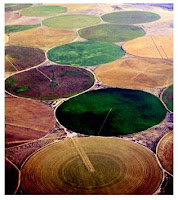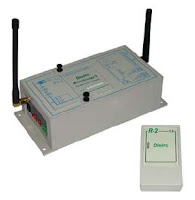
When it came to deciding whether or not to spend $120,000 to install a
center pivot in an area where the systems are a rarity, “We had to do some serious thinking,” says John Grant, who farms hill land in north central Mississippi.
John Grant, and his son, Kenneth, say the difference in corn yield over dryland in 2008 helped them pay almost half the cost of installing a center pivot system on a 170-acre field. They’re hoping to recoup the rest of the cost this year.
Drilling wells in the area is an expensive — and often futile — proposition, given the depths required to try and get adequate water to run an irrigation system. Grant and his son, Kenneth, who farms with him, had a go at drilling a well on a field where they planned to grow corn in 2008, but called it quits when they got to 600 feet and still couldn’t get sufficient water to run a center pivot. They weren’t ready to give up on irrigation, though.
“Bogue Creek runs along one edge of the field,” says John. “You can walk across it in most places and not get too wet, and just to look at it, you wouldn’t think there’s enough water flow to support a quarter-mile center pivot. But, it doesn’t go dry in the summer, and when we checked the flow, it averaged 3,000 gallons per minute. The pivot would require only 1,000 gallons per minute.
“We worked with the Big D folks at Greenwood, Miss., to design a Valley system that would pump water from the creek, uphill through an underground line, to the pivot". “We had to pay the electric company $9,600 to run a line to power the pump in the creek and the pivot, but when we looked at operating costs, electricity was much less than diesel.
“We ran the system 16 days last year, and we’ve already used it several times this season. It takes 36 hours to make a full circle on 167 acres, putting down a half-inch of water.”
When harvest time came, says John, any reservations they may have had about the irrigation investment vanished. “We averaged 195 bushels on the field, and the yield monitor on the combine was showing some spots with 230 bushels. On areas outside the pivot, we averaged 54 bushels. With the price we got for our corn, we figure we recouped half the cost of the system in just one year". “If corn prices hold this year, and we’ve already got a lot of it booked, we’ll likely make back the rest of what it cost us. As soon as we get this pivot paid for, we’ll look at putting in another.”
 Farmers work consistently to reduce operating costs while maintaining and improving crop yields. Energy and water use are two operating costs that farmers can control.
Farmers work consistently to reduce operating costs while maintaining and improving crop yields. Energy and water use are two operating costs that farmers can control.






